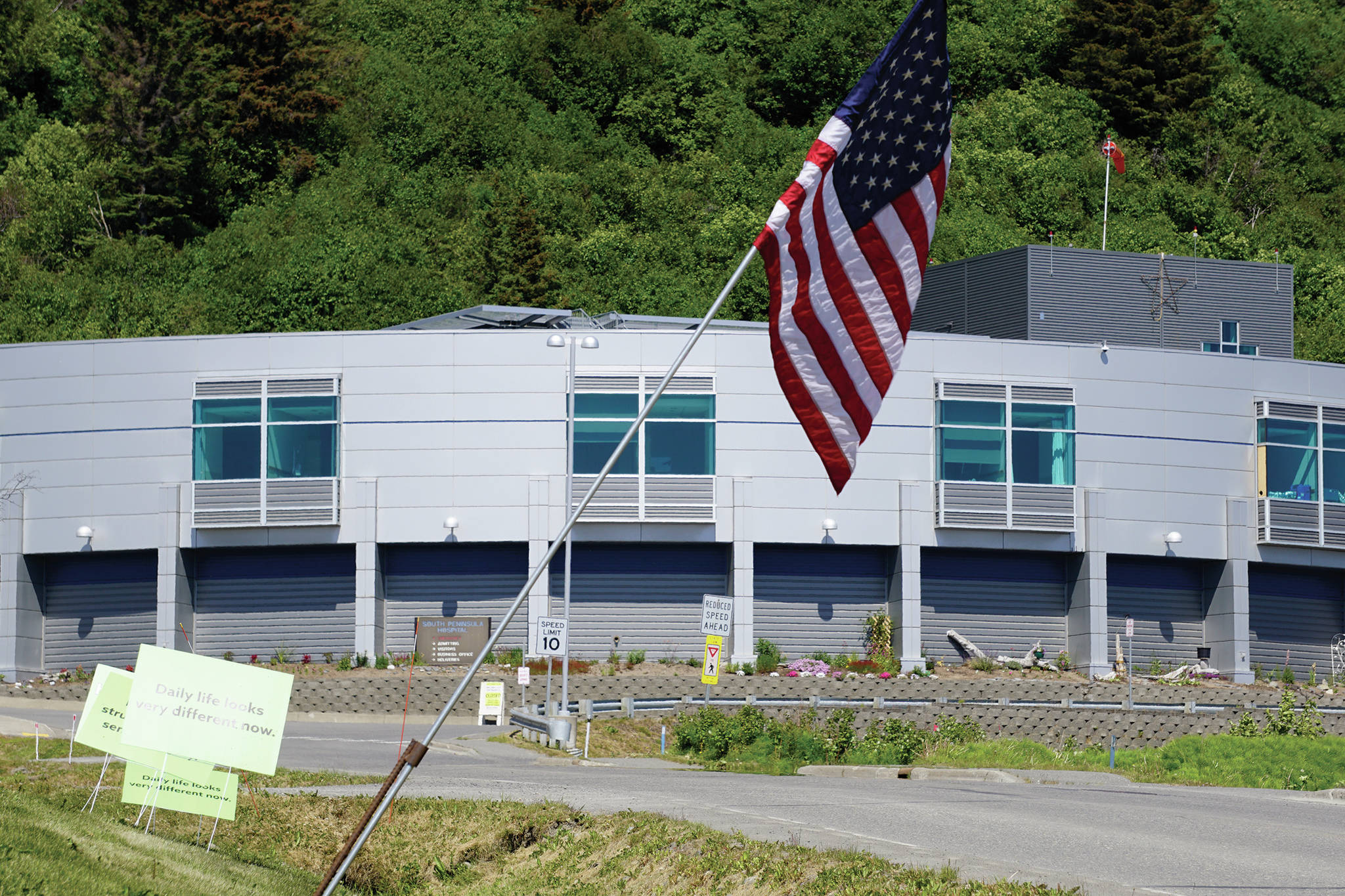Six staff members at South Peninsula Hospital have tested positive for COVID-19 in the past three weeks, according to hospital Public Information Officer Derotha Ferraro. At least two of the cases are connected.
The six employees work in five different departments in the hospital, Ferraro wrote in an email to the Homer News. None of the employees who tested positive had close contact with patients or long-term hospital residents, although one positive employee did sometimes work in the Long Term Care unit.
“Although this employee had no close contact with residents, all (Long Term Care) residents and their family members were informed and we followed guidance from CDC (Centers for Disease Control and Prevention) and Alaska Public Health for our response,” Ferraro wrote. “All residents and employees were tested as quickly as possible. All staff and residents tested negative. There is no known spread from that case within our Long Term Care. More frequent testing of our Long Term Care staff is planned going forward in coordination with guidance from Alaska State Epidemiology.”
Hospital return-to-work guidelines for COVID-19 follow Alaska Public Health and Centers for Disease Control guidelines, “and err on the precautionary side for all,” Ferraro wrote. “Keeping our employees and patients safe and healthy are a priority.”
If an employee has close contact to a known positive person without wearing proper personal protective gear (PPE), they must stay home, self-quarantine for 14 days, and get tested at day seven and again at day 13. If an employee has close contact with a confirmed positive case while wearing appropriate PPE, they monitor for symptoms multiple times a day.
If an employee has possible COVID-19 symptoms, they immediately isolate and have to get two negative test results 24-hours apart. If an employee tests positive, they also isolate and have to wait for 10 days after the onset of symptoms and 72 hours without a fever and see improvement of other symptoms. If an employee tests positive without symptoms, they isolate for 10 days after the positive test.
There can be several reasons an employee might get tested, Ferraro wrote: They may have been exposed to a known positive case, they may have had symptoms, they may have tested in advance of a medical procedure, they may have returned from travel, or other reasons. Employees are reported and treated by Public Health nurses as with any other confirmed case, including contact tracing outside of work. However, the hospital’s infection prevention staff also does an internal investigation for a positive employee.
In the event of a staff member associated with the Long Term Care, the response is different, Ferraro wrote. A known positive exposure results in all residents and employees being notified and getting tested.
“In these (non-Long Term Care) cases, since none of the other five involved close contact with patients, no patients had to be notified for any potential exposure or risk,” Ferraro wrote.
South Peninsula Hospital does not do routine testing of staff yet, Ferraro wrote, though the hospital is discussing routine testing or a voluntary rolling testing program. The hospital seeks to maintain testing supplies for overall community needs.
There is routine screening for symptoms, particularly in Long Term Care, Ferraro wrote, with temperature checks in some departments and questioning of all staff for symptoms, known exposure, fever, travel, etc.
As of Tuesday, South Peninsula Hospital had done more than 3,000 tests in its service area, and 71 individuals have tested positive for COVID-19, including the six hospital employees. South Peninsula Hospital has a staff of 480, with the six positive cases representing 1.2% of the total staff.
The hospital treats everyone — “every patient, every visitor and every coworker,” Ferraro wrote – as a potential and contagious positive case. Mitigation measures include wearing appropriate personal protective equipment, practicing safe physical distancing, wearing masks and face covers, washing hands, and frequently cleaning commonly touched surfaces.
Work spaces have been changed, seating has been eliminated to limit the number of individuals in a room, tape has been put on the floor to establish distancing of at least 6 feet, and numerous outdoor break areas have been added. Staff education also has been made a priority. As part of that education, basic case information (with patients not identified) is shared as a learning opportunity and is included in regular situational updates for the pandemic response, Ferraro wrote.
“By adopting these measures and behaviors in every department, with every interaction, it reduces exposure risk to all staff and patients, which in turn prevents the spread in the community,” Ferraro wrote.
Over last weekend the hospital saw a slight increase of individuals seeking medical care or advice for COVID-19 symptoms, she wrote.
The hospital has adequate personal protective equipment, Ferraro said. Resources include five negative-pressure rooms for inpatient care and one in the Emergency Room. Patients with suspected or confirmed COVID-19 are treated in those rooms.
“Next to safety, there is nothing more important in this pandemic than patient trust and confidentiality,” Ferraro wrote.”Our hospital and community are small enough that if we announce hospitalized numbers on a daily basis it might prevent someone from seeking care. Our patients are not a number, each person is unique, and their health situation unique. Our community members can trust they will be treated as an individual, not a case count.”
Reach Michael Armstrong at marmstrong@homernews.com.


